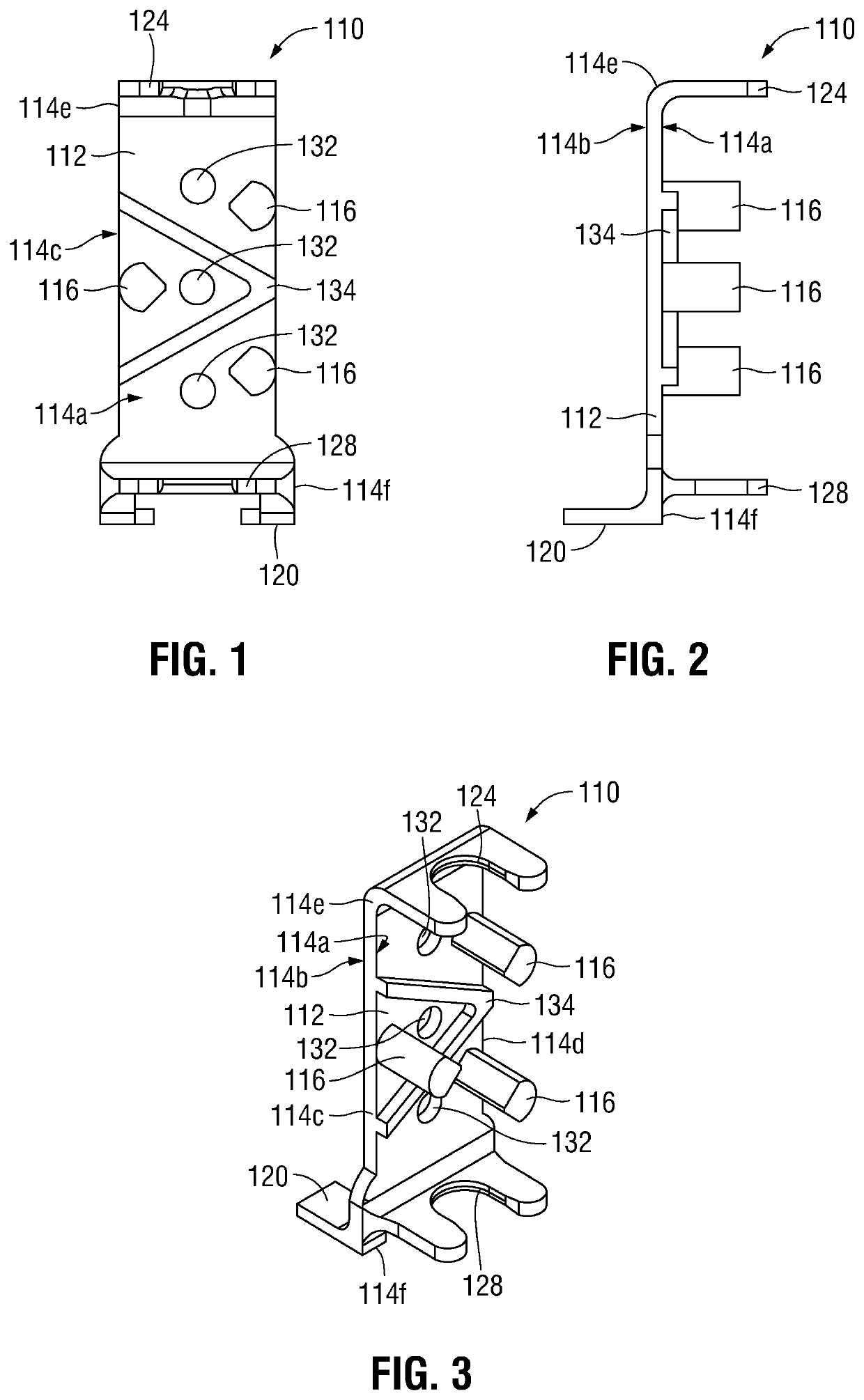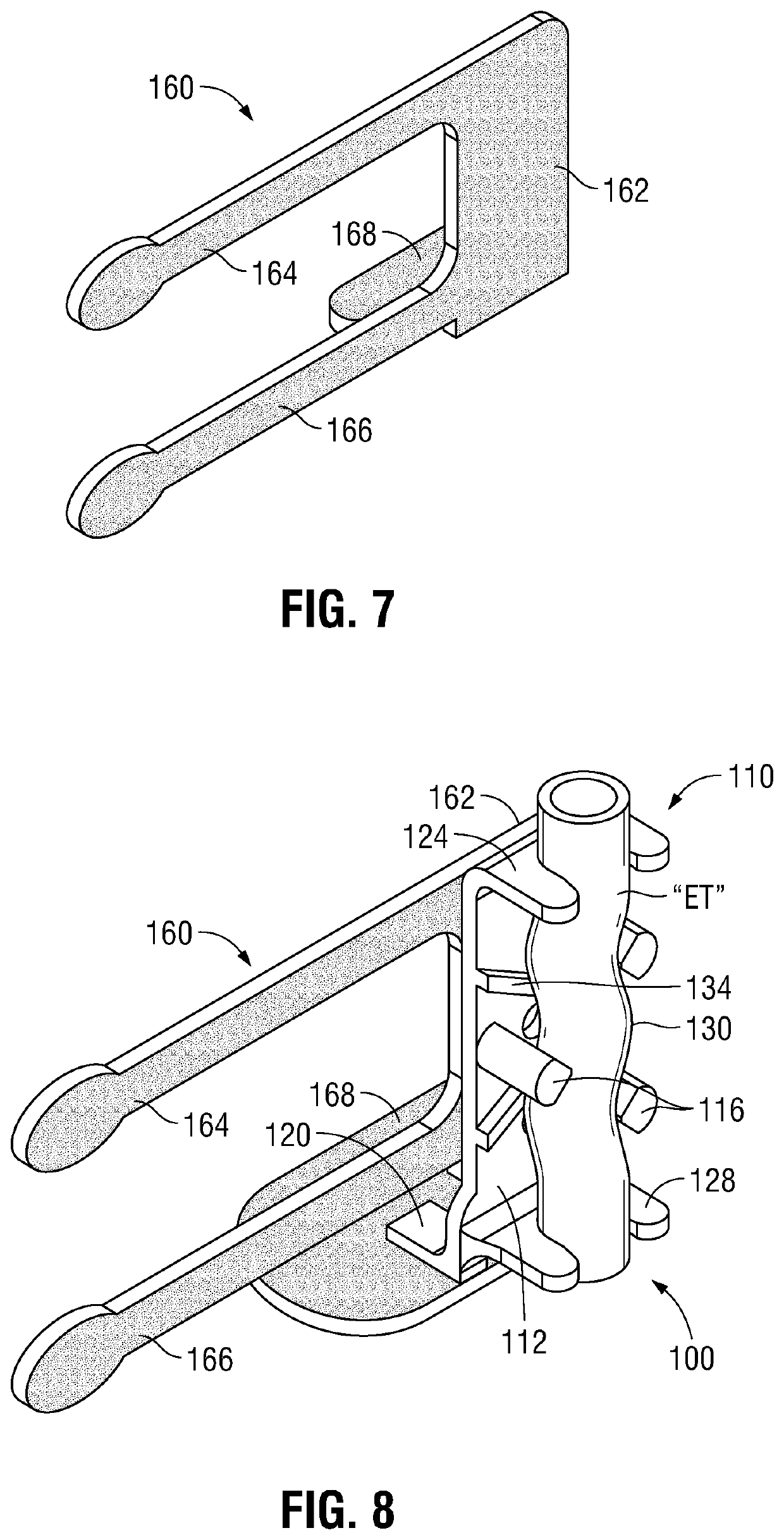Endotracheal tube securement devices and methods
a technology for secure endotracheal tubes and endotracheal tubes, which is applied in the field of medical devices, can solve the problems of tedious and laborious chores, inability to adapt to skin contact adhesion to et tubes, and inability to improve upon adhesion tapes
- Summary
- Abstract
- Description
- Claims
- Application Information
AI Technical Summary
Benefits of technology
Problems solved by technology
Method used
Image
Examples
Embodiment Construction
[0042]ET securement devices and methods are provided in accordance with the present disclosure. The ET securement devices generally include two portions: a first portion for securing an ET tube and a second portion for attaching to the patient. The first portion is configured to releasably attach to the second portion to secure the ET tube relative to the patient.
[0043]With general reference to FIGS. 1-10, an ET securement device provided in accordance with the present disclosure is shown generally identified by reference numeral 10 (FIGS. 10 and 11) and includes a first portion 100 (FIGS. 1-9) and a second portion 200 (FIG. 10). First portion 100 generally includes a vertical support 110 (FIGS. 1-3) and an attachment member 160 (FIGS. 4-6).
[0044]Referring to FIGS. 1-3, vertical support 110 includes a body 112, a plurality of guide posts 116, a foot 120, and top and bottom guides 124, 128, respectively. Different size verticals supports 110 may be provided as part of a kit, thus ena...
PUM
 Login to View More
Login to View More Abstract
Description
Claims
Application Information
 Login to View More
Login to View More - R&D
- Intellectual Property
- Life Sciences
- Materials
- Tech Scout
- Unparalleled Data Quality
- Higher Quality Content
- 60% Fewer Hallucinations
Browse by: Latest US Patents, China's latest patents, Technical Efficacy Thesaurus, Application Domain, Technology Topic, Popular Technical Reports.
© 2025 PatSnap. All rights reserved.Legal|Privacy policy|Modern Slavery Act Transparency Statement|Sitemap|About US| Contact US: help@patsnap.com



